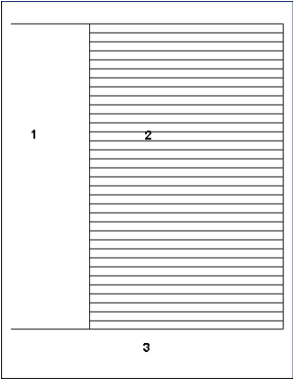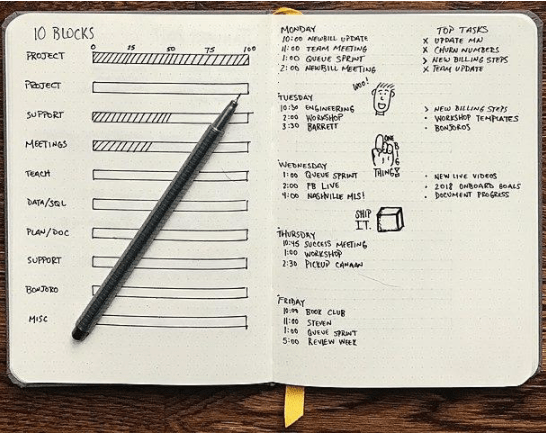As far back as I can remember, I was always very interested in taking notes. When I would read a book that really excited me, or study for an exam and felt like I was learning so much, or listen to a friend talk about something they were passionate about and wanted to know more about it—whenever any of these things happened and I’m sure many others—I couldn’t help but think, wow this is amazing! If only there was some way—any way at all—that I could have captured everything important here and remembered it.
Maybe if I write down the most important ideas with lots of detail then I could have it to read again. Or maybe, if I make good notes then I can review them over and over. When a friend is talking about something they love and you just want to know everything there is to know, the desire to have all of those thoughts captured forever feels so strong.
This has been almost my whole life story with people talking to me about topics that are important to them and me being the weird kid wishing I had better ways of keeping track of what was said…until I discovered digital note-taking.
The most common challenges we face while taking notes on paper are:
- Won’t I just forget about it if I don’t have my notebook with me?
- How to organize everything? Notebooks and tags can be too cumbersome at times.
- Writing into a notebook seems convenient but it becomes difficult to retrieve them later. Flipping hundreds of pages of notes scribbled in bad handwriting is frustrating.
- Notes taken hastily do not make much sense without the source material.
- Notes scribbled on printouts are difficult to file. Sometimes, you might only remember the name of the chapter. At other times, you might only remember the topic you want to look at again. Or maybe the name of the author is the only thing that you remember. No matter which filing system you choose, if you forget the needed terms, you won’t be able to find what you need.
Digital notes have obvious advantages. The search function negates the need for filing and makes it incredibly easier to look for the information you need to find. Popular digital note-taking tools negate the need to transcribe notes from paper to screen. But like everything, there are some disadvantages here too. Annotations and highlighted texts are often not enough.
Popular citation managers like Endnote, Mendeley, etc. have their pros and cons. Trying to use multiple digital tools at once scatter your notes almost as much as writing them on paper.
Then, there are digital databases (like OneNote, Readwise, Pocket, DevonThink, etc., which are good at finding relationships and connections between ideas). They offer some great advantages. DevonThink, for example, has a machine learning-assisted search feature. The more you use it, the more refined its search results become.
The problem is with digital databases is that they make it effortless to store and move data. You can store anything without having to organize it. If you ignore the naming conventions, tagging, and other best practices, you soon end up in digital clutter that eats more of your time than a pile of notebooks on your study desk.
It is important to remember that note-taking is a process, and not a product. It is not a goal in itself. It is a means to help you attain your study goals. So, instead of trying to find a ‘perfect’ note-taking system, you need to take notes in a way that works for you. Here are some tips from our essay writers, research paper writers, and online tutors that you might find helpful.
How to take notes for writing essays?
During the essay writing process, people often rummage through their notes constantly in an effort to write the perfect piece in their first attempt. However, when you keep looking at your notes, the creative process of writing an essay gets hindered. Most essay writers on the Transtutors platform agree that freewriting is at least 5 times faster when it comes to writing essays or articles.
They advise students to research on the topic, prepare the first draft, and then, check their notes to fill in the information. You can use your notes to add insights from data, facts, ideas, and findings in your essay or paper later.
Tips for taking notes for essay writing:
- Use a separate file for note taking purposes.
- Write notes in whole sentences – complete with subjects, objects, and verbs.
- Write your notes as a comment or in a different font so that they are easier to spot later.
- You can weave them into your text while writing or editing the content.
- Scrivener is a great tool for this purpose as it has a built-in ‘Notes’ pane where you can add notes in addition to your main text. You can also save these notes as PDF files along with the list of the relevant source material.
One problem with Scrivener is that your notes get locked with the project you are currently working on. If you want to work on the same topic later, you can’t access these notes separately. But still, most of our essay writing experts love the tool.
How to take notes for writing a Literature Review?
Note taking process for literature reviews is different. Today, mining information is easy but reading and synthesizing a vast amount of information takes a special kind of skill. Your job is to sieve through all the information you can access and decide what is relevant for the text you write and what can be used to establish the background of your article.
Tips for taking notes for literature review writing:
- Maintaining an extended bibliography of everything you read (but didn’t choose to cite) makes it easier to access the info you discarded earlier but seems important later.
- You may choose to use the Cornell template of taking notes Or the Literature Review matrix method – depending on the type of assignment you are doing.
Cornell Template of Taking Notes

In the above image:
- Area marked ‘1’ denotes ‘Cue Column’. Here, you can write keywords, definitions, and questions. This can also be used to identify themes and mention recurring patterns. Look for the keywords in your essay topic or research paper topic and mention them here.
- Area marked ‘2’ is for taking main notes. Note that this template has less space and fewer lines to write notes, which forces you to be selective of which quotes, details, or paraphrases to note down. It speeds up your note-taking process.
- Area marked ‘3’ is the ‘Summary’ section where you can write a quick explanation or comments on the topic. This big space at the bottom is to write the summary of the entire page.
Taking notes in this manner helps you come up with a writing plan automatically.
Literature Review Matrix Method of Taking Notes

Source: https://guides.library.duq.edu/matrix
The review matrix is an excellent way to compare and contrast articles and spot similarities and differences between them. This method is especially useful for writing Literature Review for Health Sciences research papers.
In the leftmost column of the table, you can mention the link of the journal article organized by date. This helps you to spot changes in the research of your chosen topic. As you can see above, the first three column headings after the column for the links are:
- Name of Authors, Title, and Journal,
- Publication Year, and
- Research Focus or Research Purpose.
You may add more columns to the matrix depending on your research question or study goals, such as:
- Methodology: You may want to mention the tests or methods you use or on whom you are conducting the experiment. For example, conducting tests on mice to assess the effectiveness of the Ebola vaccine.
- Subject: You may mention how you narrow down the scope of your research here. For example, studying the effectiveness of Ayurveda in controlling the severe symptoms of COVID-19.
- Location: The location of research might be important for your paper. For example, outcomes of math tests in high school students of the USA.
You should not make column headings for something that’s going to be common in all the research papers you choose to read. For example, if you are studying adolescent drug addicts, you may not need a column heading for the age of subjects.
The cumulative effect of this matrix method is immense. It helps you spot areas where literature is sparse – and can use it to highlight relationships between different elements of research work on the topics.
How to take notes for making presentations?
Presentation notes are audience-focused. If you need to make presentations for a class, sequencing of ideas and comprehension gain more importance. But if you have to be on stage, you may want to weave ideas into stories that can capture the attention of your audience. Hence, making notes under PowerPoint presentations can prove to be quite useful.
Tips for taking notes for the presentation:
- Mention key points on the slide and write everything else in the notes pane. This will help you avoid walls of text on slides you are presenting.
- Write your notes or script in the language that resonates with your audience. If you are presenting to a general audience, you may want to use layman terms in your notes. For a group of experts, you may want to fit in more jargon that makes you part of their academic tribe.
- Notes can also be used to write papers or articles later.
How to take notes for generic purposes?
As a student or scholar, you might find yourself reading random stuff related to your domain. You may want to have some record of this type of reading too but spending much time taking such notes is not practical. Some of the database tools that our Transtutors experts use to remain updated about their fields are:
- Evernote: to jot down random thoughts and ideas almost as well as on paper.
- Notion: to take notes, data management, knowledge management, set reminders, use calendars, wikis, etc.
- OmniFocus: to organize projects and emails, and make notes of meetings in the Notes pane
- Pocket: to clip things randomly from the web
You may also want to use the Bullet Journal Method (BuJo).
The Bullet Journal Method

Source: https://en.wikipedia.org/wiki/File:Bullet-Journal-by-Matt-Ragland.jpg
Designed by Ryder Carroll, BuJo is a personal organization method that helps you in brainstorming, scheduling, setting reminders, and making your to-do lists in a single notebook – using pen and paper. While you may choose to use commercially available bullet journals, a simple notebook may also be used.
A bullet journal has:
- An Index or Table of Contents: to help you find the topic easily
- Rapid Logging Key: A system of symbols (such as dots, dashes, circles, asterisks, etc.) to quickly take notes, write down tasks, schedule events, etc.
- Logs or To-do Lists: These might spread on two adjacent pages and hence, are also known as ‘Spreads’. These can be organized on daily, weekly, monthly, yearly logs (based on different time scales)
- Collections: This is the key component for taking notes. Here, you note down the content organized by related topics. You can put logs, trackers, to-do lists, etc. here.
- Migration: You might want to review your bullet journal every week or every month…and carry over unfinished tasks to the new lists you make for the future. This helps you stay productive and keep track of your assignments.
Numbered pages and the Index make bullet journals several times more useful than a simple notebook for the note-taking process. To learn more about how to take notes in class, contact our experts at support@transtutors.com.



0 responses on "How to take Perfect Notes while Studying?"